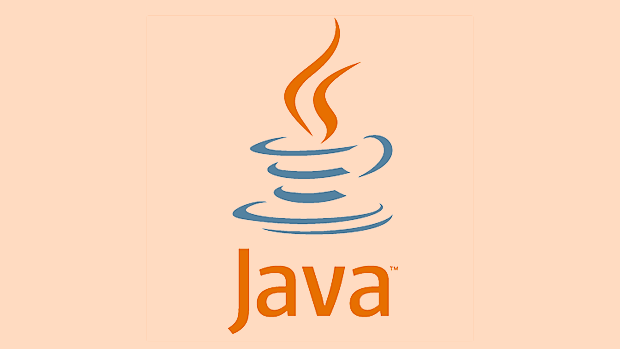To implement the proxy design pattern in Java, you first need to define a common interface, then implement the real topic class, then create a proxy class to control access to real objects, and finally use the proxy in the main program. 1. Define the public interface Image to ensure that the proxy and real objects are interchangeable; 2. Implement the RealImage class, responsible for actual image loading and display; 3. Create the ImageProxy class, implement lazy loading in its display method; 4. Use ImageProxy in the Main class to delay loading image resources and improve efficiency. This mode supports multiple uses such as security control, logging, or remote calls.

Sure, here's a practical and straightforward explanation of how to implement the Proxy design pattern in Java .

The Proxy pattern is useful when you want to control access to an object or add behavior without changing its actual implementation. This can be helpful for things like lazy initialization, security checks, or adding logging. Let's go over how to do it step by step.
1. Define a Common Interface
Start by creating an interface that both the real object and the proxy will implement. This allows them to be used interchangeably.

public interface Image {
void display();
}This keeps your code flexible and clean. Any class using this interface doesn't need to care whether it's dealing with the real thing or a proxy.
2. Implement the Real Subject
Now create the actual class that does the work. This is the object you might want to wrap later with a proxy.

public class RealImage implements Image {
private String filename;
public RealImage(String filename) {
this.filename = filename;
loadFromDisk(filename);
}
private void loadFromDisk(String filename) {
System.out.println("Loading image: " filename);
}
@Override
public void display() {
System.out.println("Displaying image: " filename);
}
}This class could represent something expensive to create — like loading a large file from disk. That's where the proxy becomes handy.
3. Create the Proxy Class
The proxy holds a reference to the real object and controls access to it. It often delays instantiation until necessary (lazy loading).
public class ImageProxy implements Image {
private RealImage realImage;
private String filename;
public ImageProxy(String filename) {
this.filename = filename;
}
@Override
public void display() {
if (realImage == null) {
realImage = new RealImage(filename); // Lazy initialization
}
realImage.display();
}
} You'll notice that RealImage is only created when display() is called for the first time. That saves resources if the image never actually needs to be shown.
4. Use the Proxy
Finally, test it out. The calling code doesn't know (or care) whether it's using the proxy or the real image.
public class Main {
public static void main(String[] args) {
Image image1 = new ImageProxy("photo1.jpg");
Image image2 = new ImageProxy("photo2.jpg");
image1.display(); // Loads and displays
image1.display(); // Only displays
image2.display(); // Loads and displays
}
}As you can see, the proxy helps avoid unnecessary resource usage by deferring creation until it's truly needed.
There are other types of proxies too — like remote proxies (for distributed systems), virtual proxies (like the one above), and protection proxies (for access control). But the structure stays mostly the same.
So yes, implementing the Proxy pattern in Java isn't hard once you understand the flow. Just define an interface, build the real class, then wrap it with a proxy that adds value.
Basically that's it.
The above is the detailed content of How to implement the Proxy design pattern in Java?. For more information, please follow other related articles on the PHP Chinese website!

Hot AI Tools

Undress AI Tool
Undress images for free

Undresser.AI Undress
AI-powered app for creating realistic nude photos

AI Clothes Remover
Online AI tool for removing clothes from photos.

Clothoff.io
AI clothes remover

Video Face Swap
Swap faces in any video effortlessly with our completely free AI face swap tool!

Hot Article

Hot Tools

Notepad++7.3.1
Easy-to-use and free code editor

SublimeText3 Chinese version
Chinese version, very easy to use

Zend Studio 13.0.1
Powerful PHP integrated development environment

Dreamweaver CS6
Visual web development tools

SublimeText3 Mac version
God-level code editing software (SublimeText3)

Hot Topics
 Difference between HashMap and Hashtable?
Jun 24, 2025 pm 09:41 PM
Difference between HashMap and Hashtable?
Jun 24, 2025 pm 09:41 PM
The difference between HashMap and Hashtable is mainly reflected in thread safety, null value support and performance. 1. In terms of thread safety, Hashtable is thread-safe, and its methods are mostly synchronous methods, while HashMap does not perform synchronization processing, which is not thread-safe; 2. In terms of null value support, HashMap allows one null key and multiple null values, while Hashtable does not allow null keys or values, otherwise a NullPointerException will be thrown; 3. In terms of performance, HashMap is more efficient because there is no synchronization mechanism, and Hashtable has a low locking performance for each operation. It is recommended to use ConcurrentHashMap instead.
 Why do we need wrapper classes?
Jun 28, 2025 am 01:01 AM
Why do we need wrapper classes?
Jun 28, 2025 am 01:01 AM
Java uses wrapper classes because basic data types cannot directly participate in object-oriented operations, and object forms are often required in actual needs; 1. Collection classes can only store objects, such as Lists use automatic boxing to store numerical values; 2. Generics do not support basic types, and packaging classes must be used as type parameters; 3. Packaging classes can represent null values ??to distinguish unset or missing data; 4. Packaging classes provide practical methods such as string conversion to facilitate data parsing and processing, so in scenarios where these characteristics are needed, packaging classes are indispensable.
 What are static methods in interfaces?
Jun 24, 2025 pm 10:57 PM
What are static methods in interfaces?
Jun 24, 2025 pm 10:57 PM
StaticmethodsininterfaceswereintroducedinJava8toallowutilityfunctionswithintheinterfaceitself.BeforeJava8,suchfunctionsrequiredseparatehelperclasses,leadingtodisorganizedcode.Now,staticmethodsprovidethreekeybenefits:1)theyenableutilitymethodsdirectly
 How does JIT compiler optimize code?
Jun 24, 2025 pm 10:45 PM
How does JIT compiler optimize code?
Jun 24, 2025 pm 10:45 PM
The JIT compiler optimizes code through four methods: method inline, hot spot detection and compilation, type speculation and devirtualization, and redundant operation elimination. 1. Method inline reduces call overhead and inserts frequently called small methods directly into the call; 2. Hot spot detection and high-frequency code execution and centrally optimize it to save resources; 3. Type speculation collects runtime type information to achieve devirtualization calls, improving efficiency; 4. Redundant operations eliminate useless calculations and inspections based on operational data deletion, enhancing performance.
 What is an instance initializer block?
Jun 25, 2025 pm 12:21 PM
What is an instance initializer block?
Jun 25, 2025 pm 12:21 PM
Instance initialization blocks are used in Java to run initialization logic when creating objects, which are executed before the constructor. It is suitable for scenarios where multiple constructors share initialization code, complex field initialization, or anonymous class initialization scenarios. Unlike static initialization blocks, it is executed every time it is instantiated, while static initialization blocks only run once when the class is loaded.
 What is the `final` keyword for variables?
Jun 24, 2025 pm 07:29 PM
What is the `final` keyword for variables?
Jun 24, 2025 pm 07:29 PM
InJava,thefinalkeywordpreventsavariable’svaluefrombeingchangedafterassignment,butitsbehaviordiffersforprimitivesandobjectreferences.Forprimitivevariables,finalmakesthevalueconstant,asinfinalintMAX_SPEED=100;wherereassignmentcausesanerror.Forobjectref
 What is the Factory pattern?
Jun 24, 2025 pm 11:29 PM
What is the Factory pattern?
Jun 24, 2025 pm 11:29 PM
Factory mode is used to encapsulate object creation logic, making the code more flexible, easy to maintain, and loosely coupled. The core answer is: by centrally managing object creation logic, hiding implementation details, and supporting the creation of multiple related objects. The specific description is as follows: the factory mode handes object creation to a special factory class or method for processing, avoiding the use of newClass() directly; it is suitable for scenarios where multiple types of related objects are created, creation logic may change, and implementation details need to be hidden; for example, in the payment processor, Stripe, PayPal and other instances are created through factories; its implementation includes the object returned by the factory class based on input parameters, and all objects realize a common interface; common variants include simple factories, factory methods and abstract factories, which are suitable for different complexities.
 What is type casting?
Jun 24, 2025 pm 11:09 PM
What is type casting?
Jun 24, 2025 pm 11:09 PM
There are two types of conversion: implicit and explicit. 1. Implicit conversion occurs automatically, such as converting int to double; 2. Explicit conversion requires manual operation, such as using (int)myDouble. A case where type conversion is required includes processing user input, mathematical operations, or passing different types of values ??between functions. Issues that need to be noted are: turning floating-point numbers into integers will truncate the fractional part, turning large types into small types may lead to data loss, and some languages ??do not allow direct conversion of specific types. A proper understanding of language conversion rules helps avoid errors.






